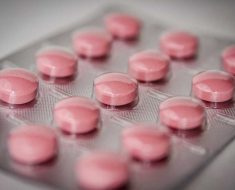The arthroscope has a camera attached, and this allows doctors to inspect the joint for damage. The procedure requires very small cuts in the skin, which gives arthroscopy some advantages over more invasive surgeries.
Knee arthroscopy has risen to popularity because it usually requires shorter recovery times.The procedure typically takes less than 1 hour, and serious complications are uncommon.
In this article, learn more about what to expect from knee arthroscopy.
Uses and benefits

Knee arthroscopy is less invasive than open forms of surgery. A surgeon can diagnose issues and operate using a very small tool, an arthroscope, which they pass through an incision in the skin.
Knee arthroscopy may be helpful in diagnosing a range of problems, including:
- persistent joint pain and stiffness
- damaged cartilage
- floating fragments of bone or cartilage
- a buildup of fluid, which must be drained
In most of these cases, arthroscopy is all that is needed. People may choose it instead of other surgical procedures because arthroscopy often involves:
- less tissue damage
- a faster healing time
- fewer stitches
- less pain after the procedure
- a lower risk of infection, because smaller incisions are made
However, arthroscopy may not be for everyone. There is little evidence that people with degenerative diseases or osteoarthritis can benefit from knee arthroscopy.
How to prepare
Many doctors will recommend a tailored preparation plan, which may include gentle exercises.
It is important for a person taking any prescription or over-the-counter (OTC) medications to discuss them with the doctor. An individual may need to stop taking some medications ahead of the surgery. This may even include common OTC medications, such as ibuprofen (Advil).
A person may need to stop eating up to 12 hours before the procedure, especially if they will be general anesthesia. A doctor should provide plenty of information about what a person is allowed to eat or drink.
Some doctors prescribe pain medication in advance. A person should fill this prescription before the surgery so that they will be prepared for recovery.

The type of anesthetic used to numb pain will depend on the extent of the arthroscopy.
A doctor may inject a local anesthetic to numb the affected knee only. If both knees are affected, the doctor may use a regional anesthetic to numb the person from the waist down.
In some cases, doctors will use a general anesthetic. In this case, the person will be completely asleep during the procedure.
If the person is awake, they may be allowed to watch the procedure on a monitor. This is entirely optional, and some people may not be comfortable viewing this.
The procedure starts with a few small cuts in the knee. Surgeons use a pump to push saline solution into the area. This will expand the knee, making it easier for the doctors to see their work.
After the knee is expanded, the surgeons insert the arthroscope. The attached camera allows the surgeons to explore the area and identify any problems. They may confirm earlier diagnoses, and they may take pictures.
If the problem can be fixed with arthroscopy, the surgeons will insert small tools through the arthroscope and use them to correct the issue.
After the problem is fixed, the surgeons will remove the tools, use the pump to drain the saline from the knee, and stitch up the incisions.
In many cases, the procedure takes less than 1 hour.

Recovering from arthroscopy is usually quicker than recovering from open surgery.
Most people leave the hospital on the day of the operation with specific instructions about how to handle recovery.
General recovery tips can include:
- applying ice packs to the dressing and surrounding area to reduce swelling and pain
- keeping the leg elevated for several days after surgery
- resting well and often
- changing the dressing regularly
- using crutches and following the doctor’s recommendations about applying weight to the knee
Doctors will typically give specific instructions before a person leaves the hospital. They may also prescribe painkillers or recommend OTC drugs for pain management.
In some cases, doctors may recommend taking aspirin to reduce the risk of blood clots.
Recovery times can vary. A person may be able to return to light activity in 1–3 weeks and resume most other physical activities in 6–8 weeks.

Exercises
Before and after knee arthroscopy, exercises can help. Working with a physical therapist to strengthen the muscles around the knee may help the knee to fully recover.
Doctors may also teach a person some simple stretches and exercises to do at home.
Exercises are a crucial part of treatment. They are needed to restore the knee’s full strength and range of motion.
The choice of exercises will depend on the extent of the problem and a person’s overall condition. It is essential to speak with a doctor or physical therapist before trying exercises at home.
Outlook
The outlook following knee arthroscopy varies from person to person. The severity and type of knee problem can influence the outcome of surgery.
A person’s commitment and ability to support their recovery can also play a role in the outcome.
Many regain full use of their knees after arthroscopy if they follow their doctors’ recovery plans, which include doing exercises and practicing self-care.
Source: Read Full Article





